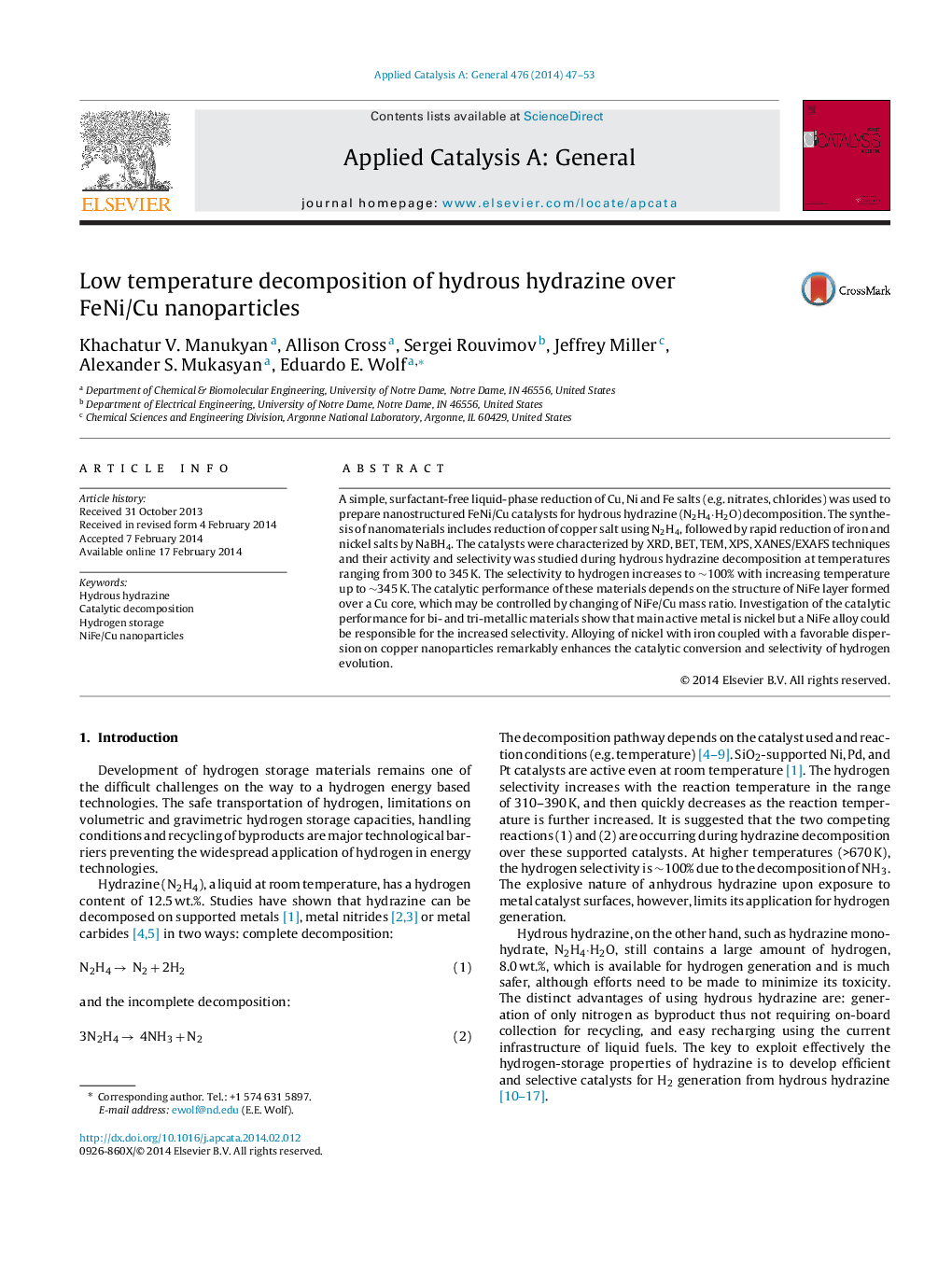| Article ID | Journal | Published Year | Pages | File Type |
|---|---|---|---|---|
| 39763 | Applied Catalysis A: General | 2014 | 7 Pages |
•NiFe/Cu nanoparticles were prepared from dissolved metal salts reduced with NaBH4.•Nanoparticles were characterized by textural and spectroscopic techniques.•NiFe/Cu has high catalytic activity for N2H4·H2O decomposition to H2 and N2.•The activity of NiFe/Cu depends on the structure of a NiFe layer over a Cu core.•Ni and Fe alloying and high dispersion enhances the catalytic activity-selectivity.
A simple, surfactant-free liquid-phase reduction of Cu, Ni and Fe salts (e.g. nitrates, chlorides) was used to prepare nanostructured FeNi/Cu catalysts for hydrous hydrazine (N2H4·H2O) decomposition. The synthesis of nanomaterials includes reduction of copper salt using N2H4, followed by rapid reduction of iron and nickel salts by NaBH4. The catalysts were characterized by XRD, BET, TEM, XPS, XANES/EXAFS techniques and their activity and selectivity was studied during hydrous hydrazine decomposition at temperatures ranging from 300 to 345 K. The selectivity to hydrogen increases to ∼100% with increasing temperature up to ∼345 K. The catalytic performance of these materials depends on the structure of NiFe layer formed over a Cu core, which may be controlled by changing of NiFe/Cu mass ratio. Investigation of the catalytic performance for bi- and tri-metallic materials show that main active metal is nickel but a NiFe alloy could be responsible for the increased selectivity. Alloying of nickel with iron coupled with a favorable dispersion on copper nanoparticles remarkably enhances the catalytic conversion and selectivity of hydrogen evolution.
Graphical abstractFigure optionsDownload full-size imageDownload high-quality image (133 K)Download as PowerPoint slide
